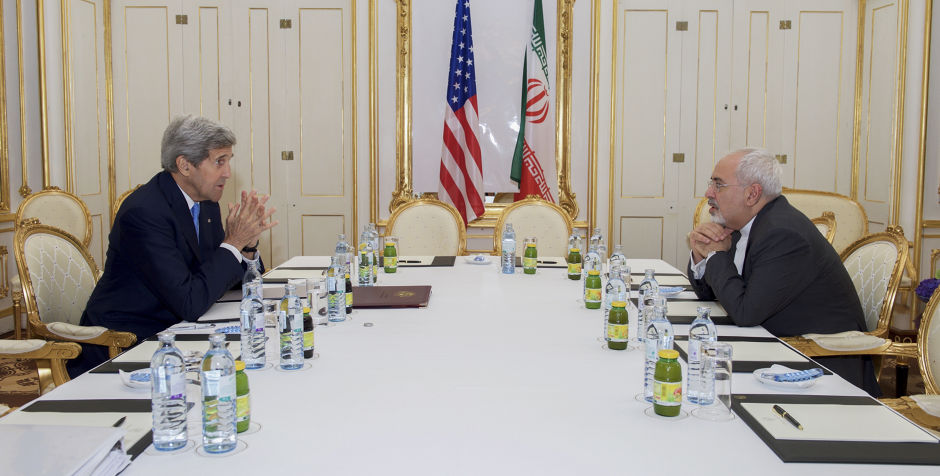What’s So Bad About the Iran Deal?
The Obama Administration finally achieved a primary goal in its search for a lasting legacy in signing a 159-page nuclear agreement with Iran.
Unfortunately, for the President, that legacy involves leaving our fellow American citizens behind, including American Pastor Saeed Abedini in chains for Christ in one of the world’s deadliest prisons. This is unconscionable.
We know that Pastor Saeed’s freedom is not part of the Iranian nuclear agreement.
But what is?
The centerpiece of the deal is supposed to ensure that Iran cannot publicly or covertly develop a nuclear weapon. The White House says the deal will block all four pathways Iran has to achieve a nuclear weapon.
But the devil is in the details. And these details are extremely troubling. Not only does it lift sanctions on scores of known Iranians who are hostile to the United States, but it also phases out all restrictions on the Iranian nuclear program over the next 10 years. So even if Iran fully complies with the deal, it can – and likely will – still achieve a nuclear weapon.
If that were not bad enough, what if Iran does not comply – as history suggests that it will not. This is a nation that is the largest state-sponsor of terrorism. This is a nation with thousands of protestors taking to the streets yelling, “Death to Israel!” and “Death to America!” Why should we trust them?
So how can we monitor their compliance?
The Wall Street Journal discusses the clear problems with the deal’s compliance procedures:
Contrary to Mr. Obama, the IAEA’s enhanced monitoring isn’t permanent but limited to between 15 and 25 years depending on the process. Also contrary to his “where necessary, when necessary” claim, inspectors will only be allowed to ask permission of the Iranians to inspect suspected sites, and “such requests will not be aimed at interfering with Iranian military or other national security activities.”
If Iran objects, as it will, “the Agency may request access” (our emphasis), and Iran can propose “alternative arrangements” to address the concerns. If that fails, as it will, the dispute gets kicked upstairs, first to a “Joint Commission,” then to a Ministerial review, then to an “Advisory Board,” then to the U.N. Security Council—with each stop on the bureaucratic road taking weeks or months.
This is far worse than the U.S.-Soviet arms agreements, in which the U.S. could protest directly to Moscow. Iran now has an international bureaucratic guard to deflect and deter U.S. or IAEA concerns.
Put simply, if inspectors want to see a suspicious site, they have to ask permission and provide so much notice that there will certainly be nothing suspicious remaining when they finally arrive to inspect. It takes a large dose of ignorance to believe that inspections after weeks of notice are anything but worthless.
If all of this were not bad enough, the problem with the sanctions relief for Iran takes this terror to an entirely new level.
Sanctions from the European Union, the United States of America, and the United Nations will be lifted. As The Hill reports, these include all restrictions on financial transactions with Iranian financial institutions, sale of crude oil and aircrafts, and importation of certain Iranian goods. This amounts to billions of dollars being handed over to the nation that is the largest state-sponsor of terrorism.
Most problematic is the last-minute insertion into the deal giving Iran relief of the arms embargo. In five years, international arms sanctions will be lifted. In eight years, the embargo on ballistic missiles that could carry a nuclear weapon will be lifted.
This deal clearly opens a path for arming Iran.
This shouldn’t come as a surprise though because, time and time again throughout this process, numerous concessions have been made to Iran.
Sanctions are also lifted on the top Iranian General with “American blood on his hands,” Qasem Soleimani, along with some of his colleagues who are senior in Iran’s Revolutionary Guard. The Daily Beast coverage discusses exactly who the names buried in the appendix are:
And Soleimani is not alone. The man whom retired general and ex-CIA director David Petraeus once called “truly evil” is joined in the get-out-of-sancitons [sic] club by other military officers, including a Revolutionary Guard Corps general, Mohammad Reza Naqdi, who said that “erasing Israel off the map” should still be Iran’s objective, even if the country’s [sic] isn’t allowed to build a nuke.
Joining him are Brigadier General Mostafa Mohammad Najjar, a former interior minister and minister of defense who also advocated attacking Israel; Brigadier General Mohammad Naderi, who runs Iran’s Aerospace Industries Organization (also getting sanctions relief); and Brigadier General Hossein Salami, who said Iran’s quest for modern weapons was guided not by military strategy, but by religion.
And all the while, American Pastor Saeed Abedini – a U.S. citizen – remains in an Iranian prison.
This truly is unconscionable. It’s why you must join with us to demand freedom for our fellow Americans wrongfully imprisoned in Iran and for Congress to reject the deal.
